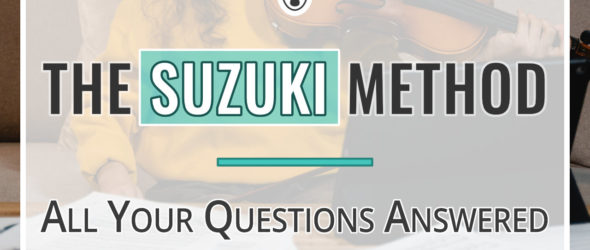If you’re interested in learning violin and have done some research, you might have heard of something called the Suzuki method. But what is it? Why do so many students and teachers choose to pursue violin this way?
As an adult beginner, or even as a parent looking into lessons for their child, it’s important to understand the different ways of learning the violin (or any other instrument), and why it may or may not be right for you and your family. Today we’ll take a deep dive into the Suzuki approach, where I’ll answer all the questions you may have. Let’s get started!
What is the Suzuki method of teaching?
The Suzuki method is a style of teaching music, originally for the violin. It’s based on the idea that every child is capable of learning music, and that early exposure to music can have a profound impact on a child’s development.
The Suzuki method emphasizes the importance of listening, repetition, and positive reinforcement in the learning process, and encourages parents/guardians to be actively involved in their child’s music education. It has been widely used around the world and has been credited with helping many children learn to play the violin at a high level.
The method has been arranged for other instruments in addition to the violin but it’s most popular for string instruments. Read on to get to know what are the other instruments in this method!
Who created the Suzuki Method?
The Suzuki method was created by Shinichi Suzuki (also written as Suzuki Shin’ichi, japan: 鈴木 鎮一). He created his self-titled method of violin teaching after learning how to play the musical instrument as an adult beginner. He was the son of the largest violin manufacturer in Japan, and he worked there setting sound posts.
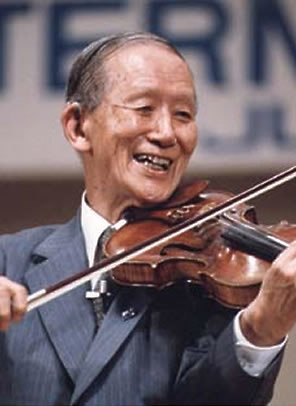
As Shin’ichi Suzuki taught himself violin, he listened to recordings of famous violinists and imitated what he heard. After a few years of self-teaching, Suzuki went to Germany to study formally. He claimed to have studied with notable violin teacher Karl Klinger, and even Albert Einstein.
Shinichi Suzuki was a bit of a philosopher and was inspired by the way children learn their native language easily. He created his method based on what he called the “mother tongue approach”, where learning music is taught similarly to a child’s first language, with imitation and repetition coming first and holding the most importance.
What are the principles of the Suzuki method?
This method isn’t just a set of books that teach music. This method is intended to be more like a lifestyle, to help mold students into noble human beings, rather than virtuoso musicians.
Mother Tongue Approach
Suzuki thought students would learn music more efficiently by going about it in the same way they’re taught their native language; through parents, repetition, and socializing.
This is one of the reasons why listening to recordings and learning music primarily by ear is so important in this method: we listen to and imitate language before we learn to read and write it.
Parent Involvement
For children, parent involvement is a huge aspect of the Suzuki method. Parents are encouraged to attend every lesson, take notes, help their student to practice, and listen to their recordings in between lessons. Parents are practically learning the instrument alongside their children and should be there to create a supportive environment. Some parents even begin learning the violin just before their student does, in order to assist them better.
Another large aspect of language learning includes going out into the world and interacting with others who are speaking it. The Suzuki method promotes a mix of regular group lessons and individual private lessons.
Students are grouped by level and play the same music together. They might even learn a new song in the book in this group setting! An important principle of the full method is having a mix of one-on-one sessions and group classes routinely.
In group settings, students are encouraged to motivate each other, rather than compete against one another. Many former Suzuki students have said that they felt a strong camaraderie with the other group members in their classes.
This setting is also a great way to meet new people who are interested in similar things or families with like-minded goals!
Repetition
As part of the mother tongue approach, repetition is very important in this style of teaching music. Students will review, memorize, and repeat the same songs for a long time, sometimes for years!
In this mindset, the repertoire is seen as “vocabulary”; once we learn a word, we add it to our personal vocabulary. The idea is that just like we don’t stop using a word after we learn it, we don’t stop playing a piece of music just because we learned it.
Repetition is also helpful to commit important violin techniques to muscle memory. The techniques we learn on the violin all compound on one another, and reviewing older material will help us feel better prepared for the harder music to come.
Listening
Many proponents of the Suzuki method encourage parents to play recordings for their children as early as they can, even before starting formal training, to hear the nuances of classical music. Listening to music is a large part of this learning system, and is reinforced throughout the entire series.
Students are told to listen to recordings of their repertoire every single day. It helps them learn what the music sounds like, and it helps students begin to memorize the piece.
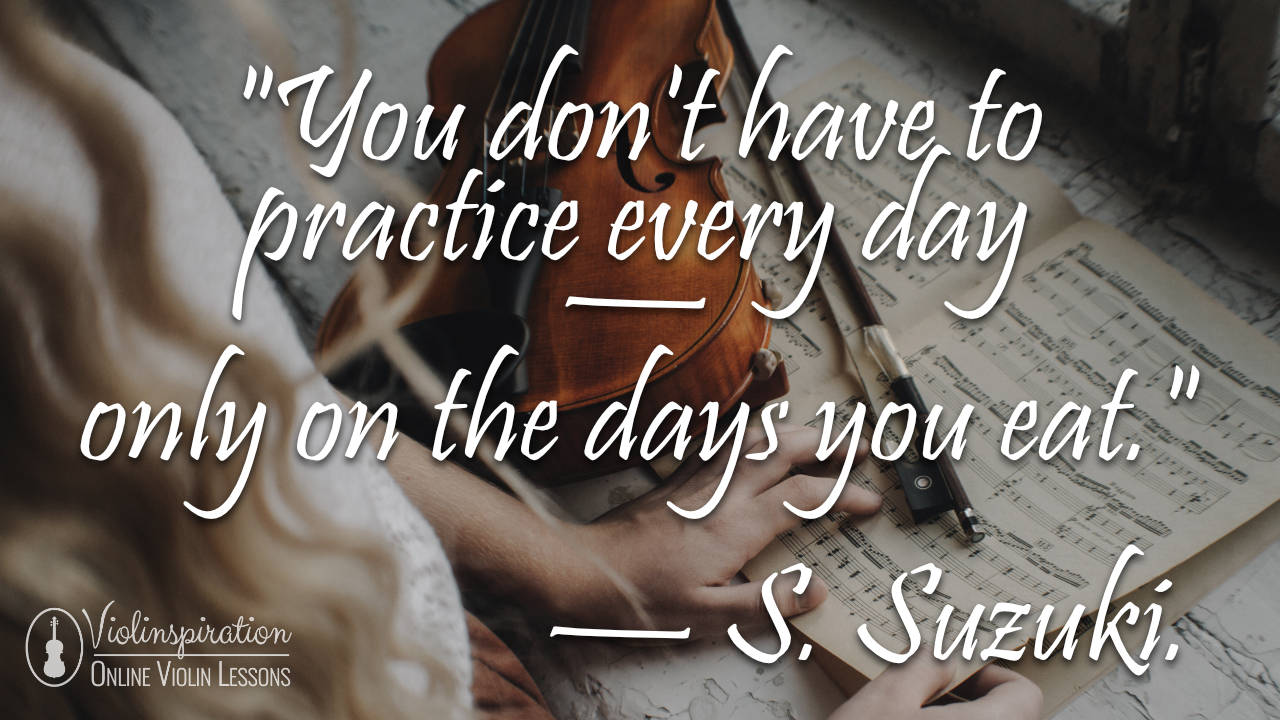
Is the Suzuki method effective?
Whether the Suzuki method is effective depends on many variables. The teacher, the student, and many other factors compound to create a musician’s ability. One great concrete piece of evidence is the number of professional violinists who were taught with the Suzuki method. There are a few notable violinists who’ve followed this method and achieved great success.
Many Suzuki teachers swear by this teaching method and use the whole philosophy with each and every one of their students. Other teachers will use the books as a supplement with other technical and reading exercises to help students become well-rounded musicians.
Examples of Professional Violinists who were Suzuki Students
- Hilary Hahn
- Anne Akiko-Meyers
- Jennifer Koh
- Leila Josefowicz
- Sarah Chang
Since the Suzuki method is still somewhat new, I’m sure we’ll see more and more professional musicians popping up who started with this specific teaching method.
What instruments work with the Suzuki method?
The Suzuki method was created for the violin, but it’s been transcribed and adapted for many different instruments. Here is the complete list:
- Accordion
- Cello
- Double Bass
- Euphonium
- Flute
- French Horn
- Guitar
- Harp
- Organ
- Piano
- Recorder
- Trombone
- Trumpet
- Tuba
- Viola
- Violin
- Voice
As you can see, the books have been adapted for most classical instruments, with the exception of a few wind instruments, like the oboe, bassoon, and clarinet.
Even though the method has been authorized for other instrument families, the string family of instruments is still the most popular in the Suzuki method. I haven’t met many wind or brass players who started this way, but at least half of the violinists and violists I meet started with Suzuki lessons as kids.
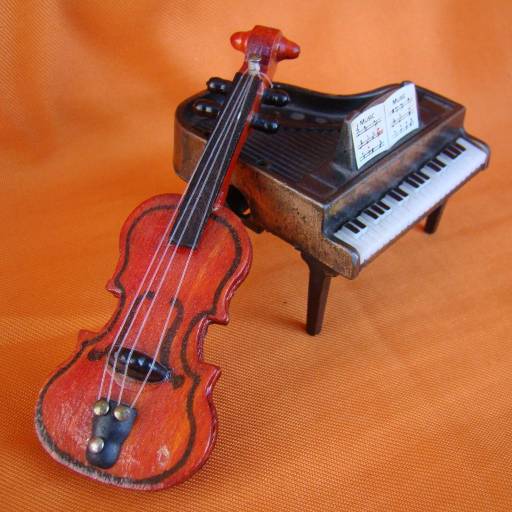
The method was based on traditional violin music, so it does translate well to other string instruments. However, wind and brass instruments have an entirely different history and different traditional repertoire than string instruments.
How long does the Suzuki method take?
The Suzuki method takes ca. 7-12 months for each book. There are 10 books, so in total it can take between 6 years and 10 years to work through the entire method. Some students begin when they first enter school and finish the last book around the time they graduate high school. Adult beginners can choose to work in a slower pace, then the total time is longer.
Students start as young as the early age of 3 and can go all the way through to adulthood. Adults can also begin learning violin with this method, but that wasn’t the original intention of Suzuki philosophy.
There are 10 books in the Violin sequence, and each and every student will take a different length of time to learn each piece and get through each book.
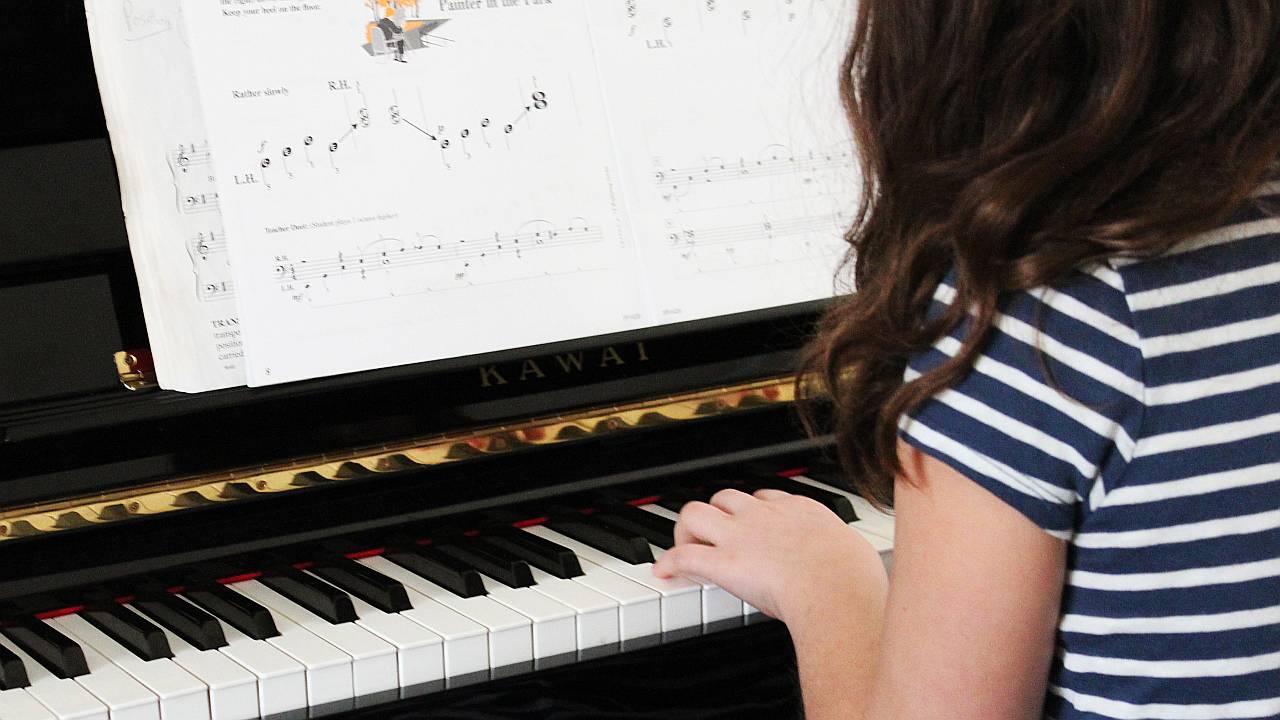
Many music teachers stop using the Suzuki books between Volumes 5 and 7 and just work on another traditional repertoire with these students because, at that point, they’ve learned enough techniques to learn various other pieces. Some teachers will keep their students solidly in the Suzuki lineup through all 10 books.
What is the importance of the Suzuki method?
The Suzuki method caught on quickly in the United States, where teachers didn’t really have one uniform way of teaching the violin. This was easy, put-together, full way of teaching, that felt much more in-depth than a more traditional method.
The benefits of learning this way
Students learn standard classical music pieces from composers like J.S. Bach, Mozart, Beethoven, and Seitz. It’s a great set of repertoire, specifically for the violin. You’ll learn a lot of “typical” styles and techniques used in classical music.
The repetition of this method also allows your musical ability to grow through your ear and through muscle memory. You’ll probably learn techniques fast.
Suzuki brings music education to young children. Music is such an important aspect of the human experience, and it’s important for kids to interact with it from an early age.
Promoting early childhood education on the violin has created a demand for instruments made for a small child’s body. You can now find tiny violins for young students! They’re so cute, you think they’re toys at a first glance!
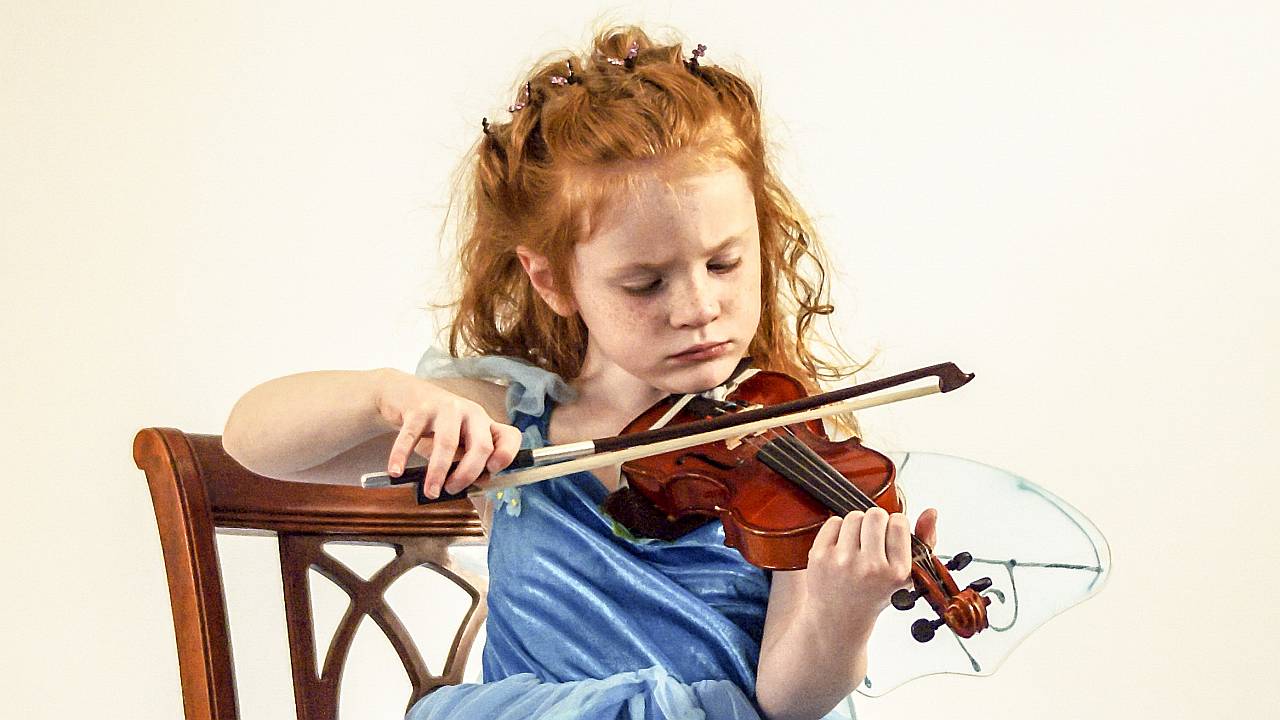
Is the Suzuki method good for adults?
The Suzuki method does work for adults! While it’s a method that’s usually seen in early childhood education, the Suzuki approach can help adults learn violin repertoire and technique without the added hurdle of understanding concepts you might encounter in a more traditional teaching method of music.
The Pros
One difficulty with teaching this specific method to kids is their short attention span. Thankfully, adults generally have a longer attention span and more discipline to endure the long learning process. Learning music takes a long time and much dedication. A longer attention span can help with seeing the overall picture.
As an adult, you might also be more motivated to learn violin, with no one standing behind you “making” you do it. If you’re going through the process of learning an instrument as an adult, you’ll probably be truly interested in the music you want to learn how to play. Sometimes kids won’t be interested in violin at all, and as a result, lack the dedication needed to actually learn an instrument.
The Cons
If you start with the 1st book, you might feel like the Suzuki repertoire choices are a little immature. Twinkle Twinkle Little Star, Go Tell Aunt Rhody, Lightly Row? Those are for kids! But you’ll soon find that there’s a lot of great classical music represented in these books.
It can also be difficult to keep up with the demands of the full Suzuki approach as an adult with a full-time job and responsibilities. The routine and schedule are definitely big aspects to consider if you’re thinking about using the full Suzuki method as an adult learner.
Can you learn the Suzuki method by yourself?
Since there’s such an emphasis on listening and imitation, this method can be used by yourself. Shin’ichi Suzuki intended for the official “Suzuki Method” to be taught by a teacher to young children, with parental support. However, adults teaching themselves through the method books is very similar to the way Suzuki taught himself.
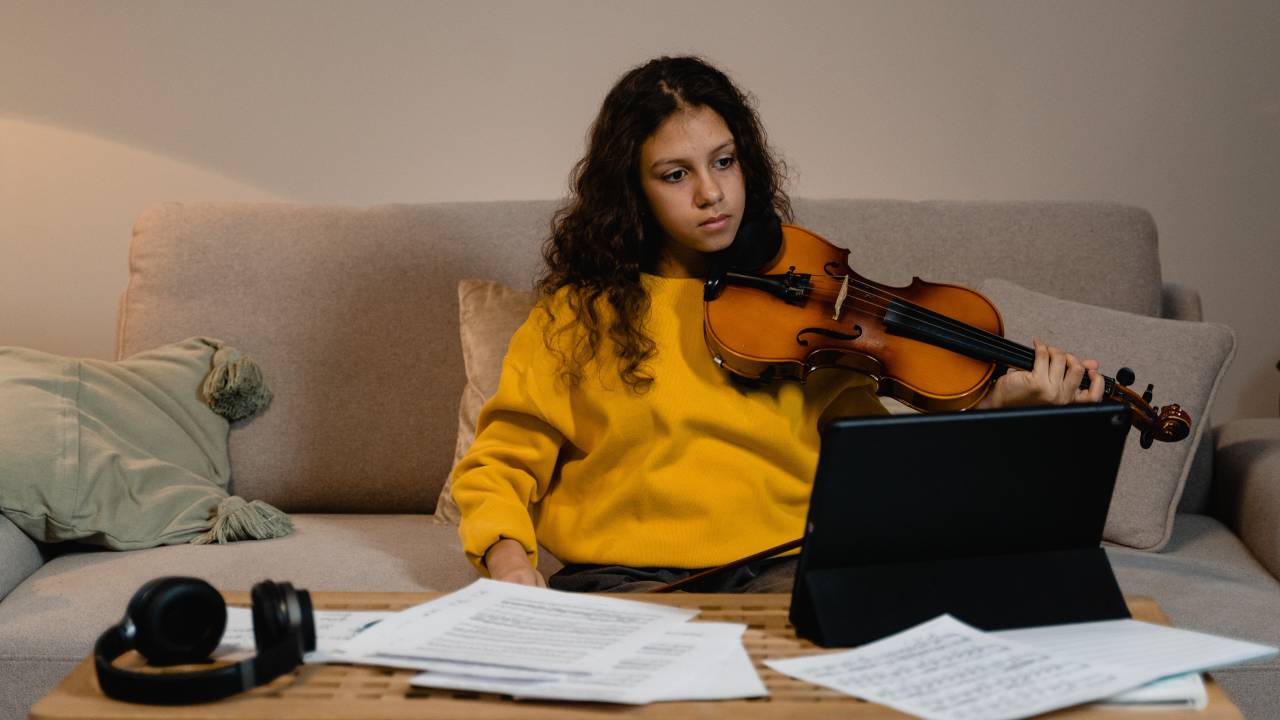
There is, however, one very tricky aspect of teaching yourself through the Suzuki books: there’s very little explanation of techniques and how to actually read music. If you’ve never learned how to read music and open up the first Suzuki book, you’ll probably be very confused. It’s very difficult to decipher everything these books ask you to do without a teacher there to fill in the gaps of what you don’t know.
However, if you already know how to read treble clef and have an idea of where a few notes are on the violin fingerboard, you’ll probably be able to navigate yourself through the books!
My free lessons will teach you everything you need to know before starting the first book, and I have articles about any questions you might have about playing the violin!
What are the downsides of the Suzuki method?
While there are so many benefits, some people in the musical community have doubts about Suzuki. There are a few reasons why the Suzuki method isn’t perfect, and may not be right for you.
Reading music is secondary
After using only the Suzuki method for a long period of time, students might have a hard time sight reading. Sight reading requires a musician to read music, and just try playing it without any rehearsal.
Since the Suzuki method progresses quickly in violin technique, many students will have to go back to the basics of music to learn note reading and music theory, which can be really frustrating!
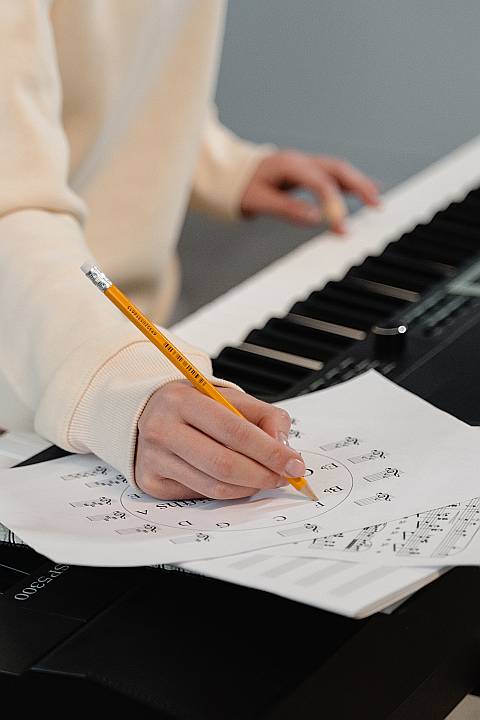
Emphasis on Western Music
Despite Suzuki’s Japanese heritage, the music provided in his teaching method is all traditional classical music written by composers in Western countries like Germany, England, and Italy.
These pieces are great to learn if you’re interested in classical violin. However, if you’re looking for something more contemporary, or learning a style like fiddle, jazz, or bluegrass, this method won’t teach you any of that.
Can be rigorous
To very young children, the schedule of two sessions (one private lesson and one group class) per week plus daily practice with a parent can feel demanding, and this can become overwhelming.
A big Suzuki philosophy is the idea that music should be a natural, human experience. This schedule can feel too strict and too much for some students, like those who learn at a slower pace, and those who feel shy in group classes.
Repetition
The Suzuki approach requires students to listen to and play music over and over again, sometimes for years. Both students and parents can easily grow tired of playing the same pieces and sound recordings again and again. This can be discouraging, and some students feel that they’re not progressing since they’re “always” working on the same music.
While repetition is helpful when you’re learning an instrument, too much of it can become irritating and frustrating. You might find yourself feeling resentful towards playing, if you’re tired of the music you’re playing and feel stuck.
One size fits all approach
There isn’t much wiggle room in the Suzuki method, although most Suzuki teachers supplement a few worksheets, songs, and exercises into their lessons.
If you go to a group class, you could talk to each student there, and they’ve all learned the same exact pieces of music. That can be really comforting, but it can also feel a bit off-putting – everyone has different learning styles and different needs. Simply using what’s in these books might not work for every violin student.
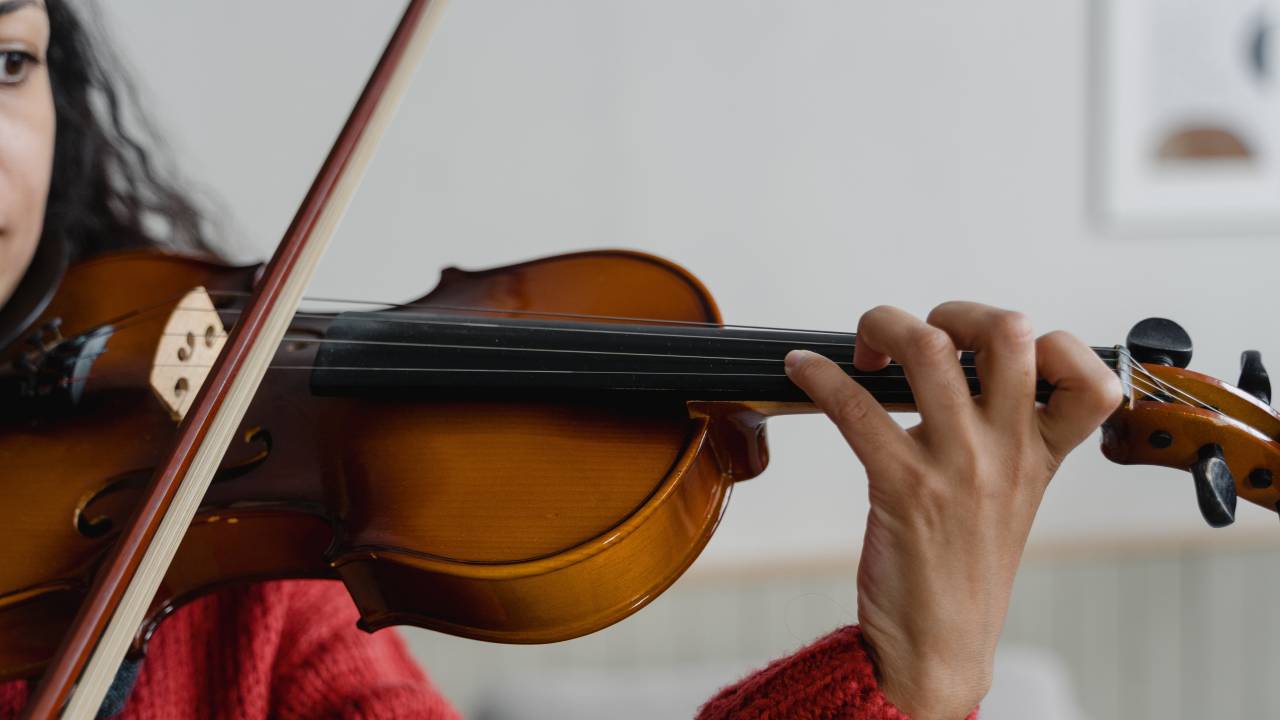
Finding Suzuki Violin Teachers
If you’re looking to study the Suzuki method fully, you’ll want to find a Suzuki violin teacher. They’ve gone through teacher training to learn all the details of the Suzuki method, and are professionals at teaching Suzuki students.
Here are a few great resources and places to look for certified Suzuki violin teachers:
- European Suzuki Association
- Suzuki Association of the Americas
- International Suzuki Association
- Local Suzuki programs
Summary
The Suzuki Violin Method is a very popular way of teaching music, especially to young children. Adults can also use this method to learn the violin. Even if you use just the books to play music without the full method of trained teacher and group lessons with it, you can still learn a lot of great techniques and music in a short amount of time.
I hope this deep dive into Shinichi Suzuki and his teaching method was helpful in your violin journey.
If you would like to check out my step-by-step teaching methods tailored to adult beginners, check out my online school, Julia’s Violin Academy.
